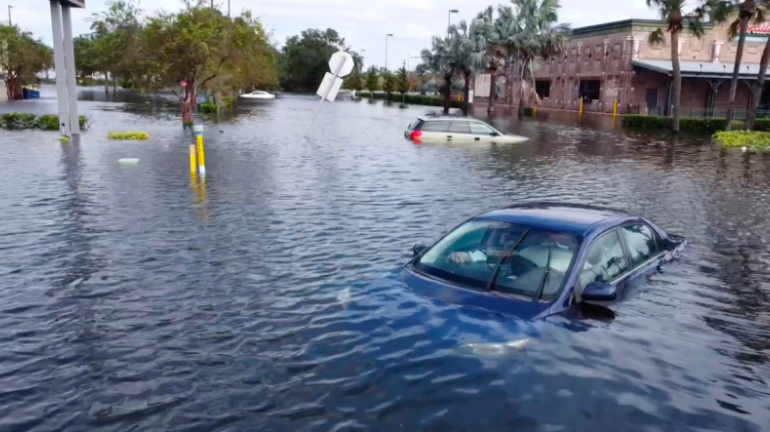. In the last two months of this year the east coast has been plagued by ongoing hurricanes with hurricane Milton leaving coastlines in shambles. As the storm spread through various states its strong winds and heavy torrential rains caused mass destruction.
Milton first arrived in Florida during early October, carving a path along its coast. Hurricane Milton became a Category 5 hurricane, with max speeds going up to 130 mph. Coastal towns like Daytona Beach and St. Augustine experienced severe flooding, while areas which were not directly affected by the hurricane were experiencing power outages and tornado warnings. The affected area had to watch helplessly as their houses were getting torn and uprooted.
. About 2,000 National Guard troops from nine states have been mobilized, along with 65 high-water vehicles, and eight helicopters. Although emergency services were able to help many people, the scale of the hurricane caused drastic consequences: many schools and other public spaces such as libraries and community centers were turned into makeshift shelters for people whose homes were either flooded or damaged.
. However, since early October, active-duty service members who support local, state, and national organizations have completed 100 ground missions and 70 air missions, delivering more than 270 tons of help kits and first aid and nearly another 200 tons by plane and helicopter. Additionally, these service members cleared hundreds of miles of roads, increasing access to some of the hardest hit areas of North Carolina. In the coming days, active-duty service members will slowly start transitioning out of the area as a long term recovery phase begins. This will be a gradual process, and carefully coordinated among state and local officials, U.S. Northern Command, the dual-status active/Guard commander, FEMA and the federal coordinating officer.
. As communities sift through the rubble, the emotional toll is recognizable. Stories of loss and perseverance are emerging from the chaos of these past weeks, with people coming together to support one another during stressful times. The aftermath of Milton wasn’t pretty but because of communities working together they were able to come out more resilient.
AFTERMATH OF HURRICANE MILTON
0
More to Discover
About the Contributor
Akshitha Kalidindi, Staff Writer
Hi, I’m Akshitha and I’m a freshmen. I enjoy biking in trails, drawing in my notebook, and watching shows with my friends and family. I’m excited to join the watchdog!





